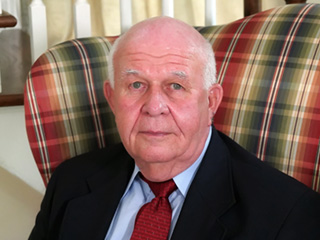Publisher's note: Agenda 2012 is the John Locke Foundation's charge to make known their wise political agenda to voters, and most especially candidates, with our eighteenth instalment being the "Class Size," written by Dr. Terry Stoops, Director of Education Studies at the John Locke Foundation. The first installment was the "Introduction" published here.
Support for reducing class size usually cuts across political and ideological divides, garnering accolades from legislators, policymakers, and parents alike. Nevertheless, the relationship between class size and student achievement has been the subject of scholarly debate for decades. While several large-scale studies suggest that students benefit from class size reductions, a number of high-quality studies conclude that smaller classes are not the "magic bullet" that many believe them to be.
Key Facts
• Recent studies of class sizes in North Carolina public schools suggest that there is little or no significant relationship between small class sizes and student achievement. One research study also found that teachers' perceptions about their class sizes were not tied to teacher job retention.
• Results from the 2010 North Carolina Teacher Working Conditions Survey indicate that most teachers are content with current class sizes. Sixty-one percent of the over 104,000 respondents to the survey agreed or strongly agreed that class sizes "are reasonable such that teachers have the time available to meet the needs of all students." Twenty-nine percent of respondents disagreed and 10 percent strongly disagreed with that statement.
• From a fiscal standpoint, even limited class size reduction initiatives are costly to implement and maintain. Research suggests that class sizes must be reduced to between 15 and 20 students (depending on the grade) to have any positive effect on learning. Reductions of this magnitude would require a massive outlay of funds for additional teachers and new facilities.
• During the 2010-11 school year, 11 states, including North Carolina, loosened regulations on class size.
• In 2011, the N.C. General Assembly gave school districts maximum flexibility to establish class sizes in grades 4 through 12.
• During the 2011 legislative session, lawmakers initiated a multi-year effort to reduce class sizes in grades K-3. These mandates require all public school districts to have a district-wide average of 21 students per class and maintain an individual class size maximum of 24 students. If they meet their eventual goal of reducing class sizes to an average of one teacher for every 15 students, North Carolina will have the smallest elementary school classes in the nation.
• North Carolina charter schools are not held to class size limits.
• According to the latest data from the National Center for Education Statistics, North Carolina's average elementary class size was 19 students and average secondary class size was 21 students. Both were lower than the national average of 20 students and 23 students, respectively.
• The Organization for Economic Cooperation and Development (OECD) reports that the average class size in United States primary schools (24) was higher than the international average (22). United States secondary schools had an average class size (23.2) that was slightly lower than the international average (23.7). Overall, many top-performing nations had larger average class sizes than the United States.
Recommendations
State class size mandates should be eliminated. School districts should have the authority to set class sizes for all grades and subjects according to their needs and available resources.
Class size reduction initiatives should target only those students who struggle in larger classroom settings and would benefit from individualized instruction in state-mandated courses.
Analyst: Dr. Terry Stoops
Director of Education Studies
919-828-3876 •
tstoops@johnlocke.org



























